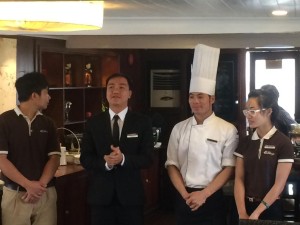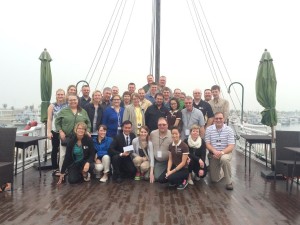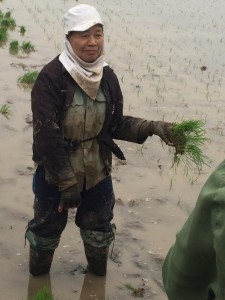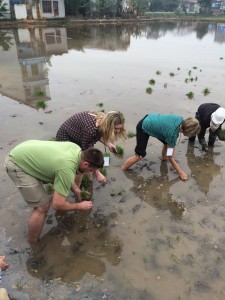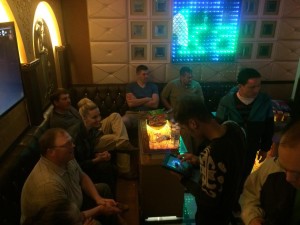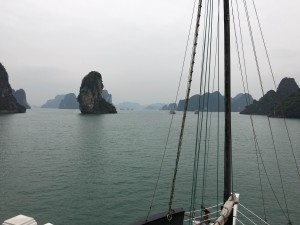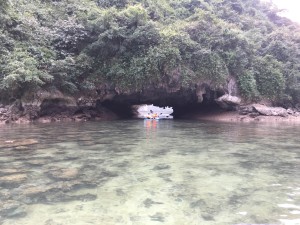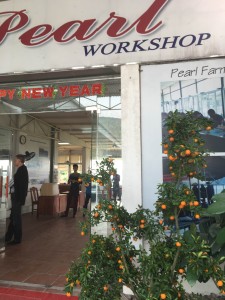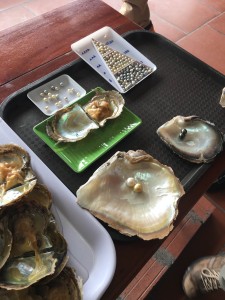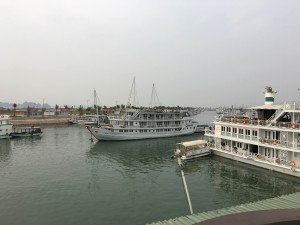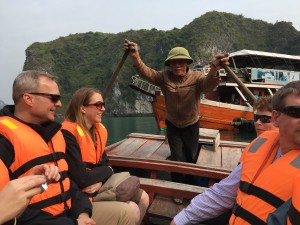After a night of fine Vietnamese food and an hour or two exploring the environment around our French Quarter hotel in Hanoi, we began our fifth day in Vietnam meeting with members of the U.S. Embassy. The Embassy is under construction in Hanoi, so we traded the excitement and high security connected to embassies for the comfort of a comfortable conference room on the top floor of our hotel. Political Officer Adam Davis, Economic Officer Joe Narus, Officer for Environment, Science, Technology and Health Ali Davis and Agricultural Attache (actually an employee of the USDA) joined us to both explain their roles as diplomats as well as field our questions about Vietnamese-American relations.
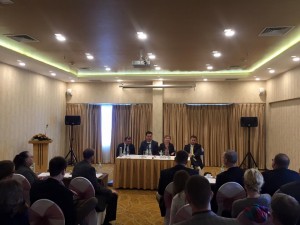
Adam, a St. Olaf and U of M grad began, telling us that relations between the two countries “has never been stronger.” He stressed how impressive that is considering diplomatic relations between the two countries are only 20 years old. He referred to relations as a “Comprehensive Partnership”, a term used by countries for whom nothing is ‘off the table’.
With a population of 93 million, Vietnam is second only to the Philippines’ 98 million people in the ASEAN (Association of South East Asian Nations). Thailand is a distant 3rd at 53 million. Vietnam is both our 11th most important trade partner and we are Vietnam’s 11th most important trade partner. Adam implied that trade and economics are just one of the reasons that both countries are working together to strengthen ties and work together. Of course, it isn’t all rainbows, with problems with the rule of law, specifically the interpretation of laws, and continued, pervasive corruption making intergovernmental economic relations very challenging at times.
Ali, an Ohio native who now calls D.C. home, reported much more eagerness to cooperate when it comes to the Environment, Science, Technology and Health – all areas that don’t have nearly as many differences as economic and political viewpoints. Vietnam is all too aware of the deeply scarred landscape in China caused by total disregard for its environment, and it is cognizant that as one of the top 5 most bio-diverse areas in the world, it has to balance growing its economy with preserving what makes the country so special.
Air and water quality have plummeted in the last 10 years, a fact made all too plain by the multitudes of both moped drivers and pedestrians using surgical-style face masks as they travel outdoors. For a country that was receiving food aid as recently as 2000, health has steadily improved along with the growth of the economy. Ironically, economic growth has meant Vietnam will receive less foreign aid to combat diseases like HIV.
While Agriculture represents 18% of GDP, it accounts for 33% of land use and 50% of the workforce according to Michael (official figures state the percentage as high as 90%. though that includes occasional/family workers and logistics folks like drivers), It is the world’s 3rd largest exporter of rice (much of which goes to a multitude of African nations) and is in the top 5 when it comes to shrimp, cashews, rubber, black pepper and robusta coffee (used primarily for making instant coffee).
In turn, Vietnam’s main imports from the U.S. are cotton, dairy, soybeans and meal and wood products. Corn, which would seemingly fit into expansion of hog and poultry farming, is NOT imported from the U.S., as farmers and the agriculture ‘union’ that guides government policy recommends corn dried to a 13% moisture level instead of the typical 14% level commonly found in U.S. corn. This comes from reasoning that in a humid, tropical climate (though with a high of 59 degrees, it didn’t seem all that tropical in Hanoi THAT day) corn/feed needs to be drier to prevent spoilage. Another potential export opportunity for the U.S. is in the dairy sector. With the dampness as a whole, lots of mountainous terrain and a perennially hot Southern growing region, dairy farming is marginal at best in Vietnam. Yet the government, in an attempt to help its population grow taller (I’m not making this up!) is actively pushing increased dairy consumption.
The omnipresent shadow of China, an adversary for millennia, looms to the North. Vietnam is increasingly looking to the technological (and bio-tech), military and educational superiority of the U.S. as it grows its economy and strives to maintain a unique cultural identity, according to these four bright diplomats. With a public approval rating of the U.S. between 75% to 90%, it is clear that regardless of political differences and economic challenges, the Vietnamese-American relationship will continue to grow stronger.
A trip to a unique restaurant was a perfect juxtaposition from a fact-filled presentation from the Embassy. We headed to KOTO, right across from the Confucius temple in Central Hanoi. KOTO, which stands for Know One Teach One was started by a Vietnamese expat in Australia who wanted to create a restaurant business that could teach abandoned and impoverished youngsters work skills in the restaurant and hospitality industry. Visited by President Clinton in 2000, the three-story restaurant was teaming with eager young cooks, servers, bartenders and support staff.
Using money raised while betting on where our class would be going during our Itasca session, we purchased a $150 ‘brick’, simply stenciled MARL Class VIII (the best class ever, needless to say) to help support KOTO’s mission. When finished, it will be displayed on the wall along the beautiful winding terrazzo stone staircase.
A quick visit to the 1,000 year-old temple next door was followed by a jaunt to Ho Chi Minh square, which sits in front of the huge mausoleum where his embalmed body lays. Ironically, ‘Uncle Ho’ wanted to be simply cremated, with ashes spread over a unified Vietnam, but the political party saw value in keeping the dead leader embalmed and enshrined, courtesy of the Soviets and their experience keeping Lenin’s corpse looking spiffy all those years.
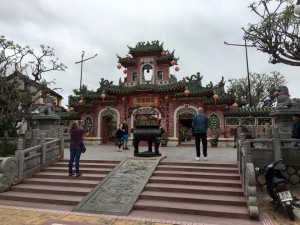
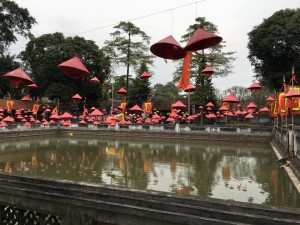
We had only a few hours before we had to depart for Da Nang and Hoi An, we sped over to the famous ‘Water Puppet’ theatre, where puppeteers behind a screen operate wooden and fabric puppets in a pool of water. Originating in the rice fields, water puppetry was both a way of entertainment but also a method of passing down music and legend from generation to generation. It was amazingly fun, intricate and like nothing any of our group had ever seen. Part ‘Punch and Judy’, part fireworks show, part ancient Vietnamese musical revue and part water show, the puppetry led us into our next adventure – the ‘cyclo’ ride.
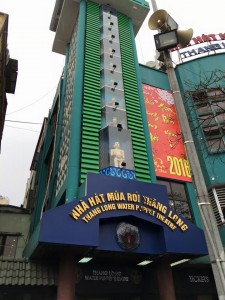
All 29 of us piled into bicycle rickshaws for a tour through the old town, with mopeds, cars and cyclists zooming by. Apprehension turned to laughter and joy as our drivers somehow managed to pilot us gracefully through the most insane traffic any of us had ever experienced. None of us will ever forget that ride!
Soon, though, we were boarding the bus to head to the airport. After thanking and tipping our bus drivers and tour guide Thang, we checked in for our flight to Da Nang, the 3rd largest city in Vietnam. Once a huge U.S. military base, Da Nang is now thriving as a coastal tourist destination and business center. Our destination was 20 km south: Hoi An, a UNESCO World Heritage Site city with historical influence from Chinese, Portuguese and Japanese traders over hundreds of years. We checked in to our charming family-owned hotel, ate a very late supper (starting at 11:30 p.m.) and hit our beds soon after.
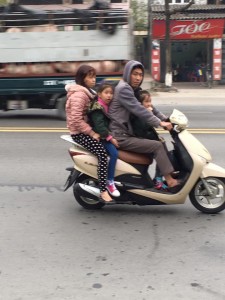 Sincerely,
Sincerely,
Jesse Davis and Corey Hanson
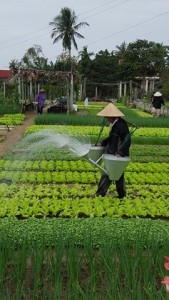
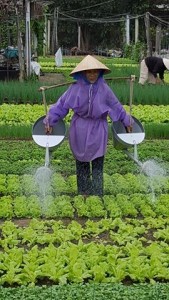
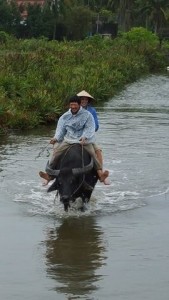
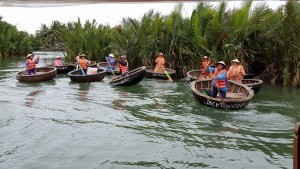
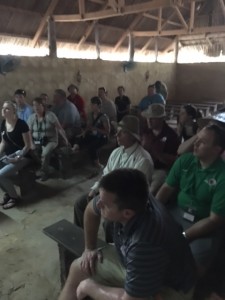
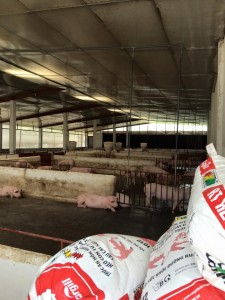
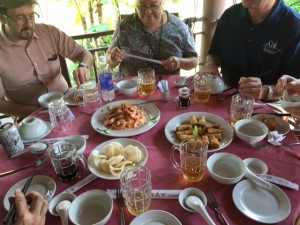
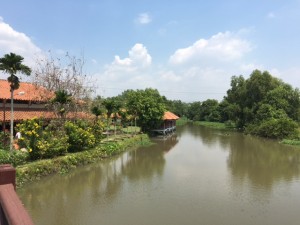
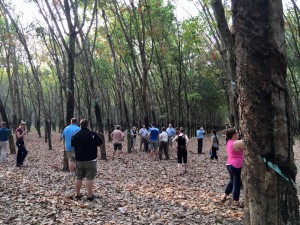
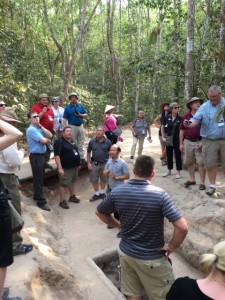




 Sincerely,
Sincerely,